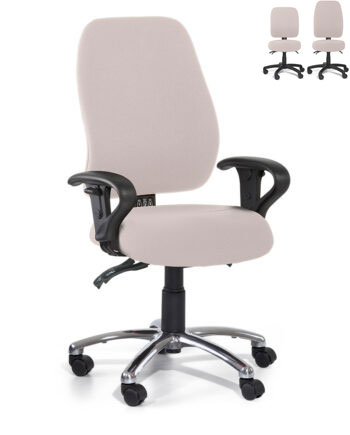
Ergonomics
ERGONOMICS
What is Ergonomics?
Webster’s New World Dictionary (College Edition) defines ergonomics as “the study of problems of people adjusting to their environment; especially the science that seeks to adapt work or working conditions to suit the worker”. With the average office worker spending about 80% of their time in a seated position, good posture is vital to ensure good health and well being, increased productivity and the saving of lost man hours due to related health problems, in particular back and neck pain, headaches, leg and feet problems.
ERGONOMICS
Why is Ergonomics Important?
The body of knowledge covering ergonomic risks in this area is still relatively small but it is rapidly growing. Ergonomics is good for people and the bottom line. Not only does it improve employee well being and morale but it can save money by reducing costs related to workers compensation, absenteeism and staff turnover.
What can you do?

Start an Ergonomic Awareness Program
Educate staff about the adjustments of their chair or workstations.
Prepare a Workplace Assessment
Have someone who understands ergonomics prepare a workplace assessment.
Plan for the Future to Take Care of Your Staff
Select office furniture that suits the needs of the office and adjust to individuals.
What to look for in a chair
- Correct Seating Posture is Maintained Over Long Periods
- Height Adjustable Seat
- Forward Seat Tilt
- Waterfall Front Edge to Maximise Blood Circulation in the Legs
- Firm Height Adjustable Lumbar Support
- Adjustable Forward/Back Tilt on Backrest
- Height Adjustable Arms if Applicable
- Synchronised Mechanisms where Applicable
- Fire Retardant Fabric that is Durable
Try Before You Buy - Gregory Trial Chairs
A five-minute test run is not enough. Ask for a Gregory trial chair to be made available for use over a one or two day period.
Learn how to operate the chair and make proper use of the adjustments, ask other people to sit in the chair and test it.



